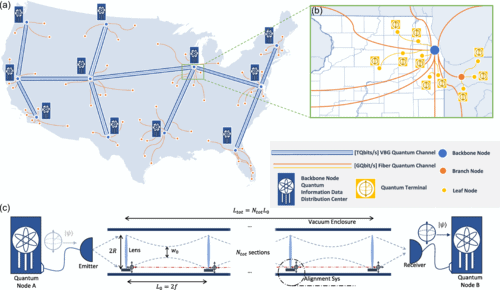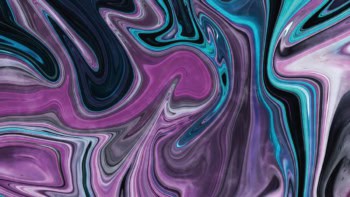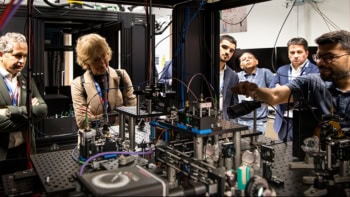
A network of vacuum-sealed tubes inspired by the “arms” of the LIGO gravitational wave detector could provide the foundations for a future quantum Internet. The proposed design, which its US-based developers describe as both “revolutionary” and feasible, could support communication rates as high as 1013 quantum bits (qubits) per second. This would exceed currently-available quantum channels based on satellites or optical fibres by at least four orders of magnitude, though members of the team note that implementing the design will be challenging.
Quantum computers outperform their classical counterparts at certain problems. Realizing their full potential, however, will require connecting multiple quantum machines via a network that can transmit quantum information over long distances, just as the Internet does with classical information.
One way of creating such a network would be to use existing technologies such as fibre optics cables or satellites. Both technologies transmit classical information using photons, and in principle they can transmit quantum information using photonic qubits, too. The problem is that they are inherently “lossy”, with photons being absorbed by the fibre or (to a lesser degree) by the Earth’s atmosphere on their way to and from the vacuum of space. This loss of information is particularly challenging for quantum networks, as qubits cannot be “copied” in the same way that classical bits can.
Inspired by LIGO
The proposal put forward by Liang Jiang and colleagues at the University of Chicago’s Pritzker School of Molecular Engineering, Stanford University and the California Institute of Technology aims to solve this problem by combining the advantages of satellite- and fibre-based communications. “In a vacuum, you can send a lot of information without attenuation,” explains team member Yesun Huang, the lead author of a Physical Review Letters paper on the proposal. “But being able to do that on the ground would be ideal.”
The new design for a long-distance quantum network involves connecting quantum channels made from vacuum-sealed tubes fitted with a series of lenses. These vacuum beam guides (VBGs), as they are known, measure around 20 cm in diameter, and Huang says they could span thousands of kilometres while supporting the transmission of 10 trillion qubits per second. “Photons carrying quantum information could travel through these tubes with the lenses placed every few kilometres in the tubes to ensure they do not spread out too much and stay focused,” he explains.

The new design is inspired by the system that the Laser Interferometer Gravitational-Wave Observatory (LIGO) experiment employs to detect gravitational waves. In LIGO, twin laser beams travel down two tubes – the “arms” of the interferometer – that are arranged in an L-shape and kept under ultrahigh vacuum. Mirrors precisely positioned at the ends of each arm reflect the laser light back down the tubes and onto a detector. When a gravitational wave passes through this set-up, it distorts the distance travelled by each laser beam by a tiny but detectable amount.
Engineering challenges, but a big payoff
While LIGO’s arms measure 4::km in length, the tubes in Jiang and colleagues’ experiments could be much smaller. They would also need only a moderate vacuum of 10-4 atmospheres of pressure as opposed to LIGO’s 10-11 atm. Even so, the researchers acknowledge that implementing their technology will not be simple, with several civil engineering issues still to be addressed.

Quantum entanglement expands to city-sized networks
For the moment, the team is focusing on small-scale experiments to characterize the VBGs’ performance. But members are thinking big. “Our hope is to realize these channels over a continental scale,” Huang tells Physics World.
The benefits of doing so would be significant, he argues. “As well as benefiting secure quantum communication (quantum key distribution protocols, for example), the new VBG channels might also be employed in other quantum applications,” he says. As examples, he cites ultra-long-baseline optical telescopes, quantum networks of clocks, quantum data centres and delegated quantum computing.
Jiang adds that with the entanglement created from VBG channels, the researchers also hope to improve the performance of coordinating decisions between remote parties using so-called quantum telepathy – a phenomenon whereby two non-communicating parties can exhibit correlated behaviours that would be impossible to achieve using classical methods.



